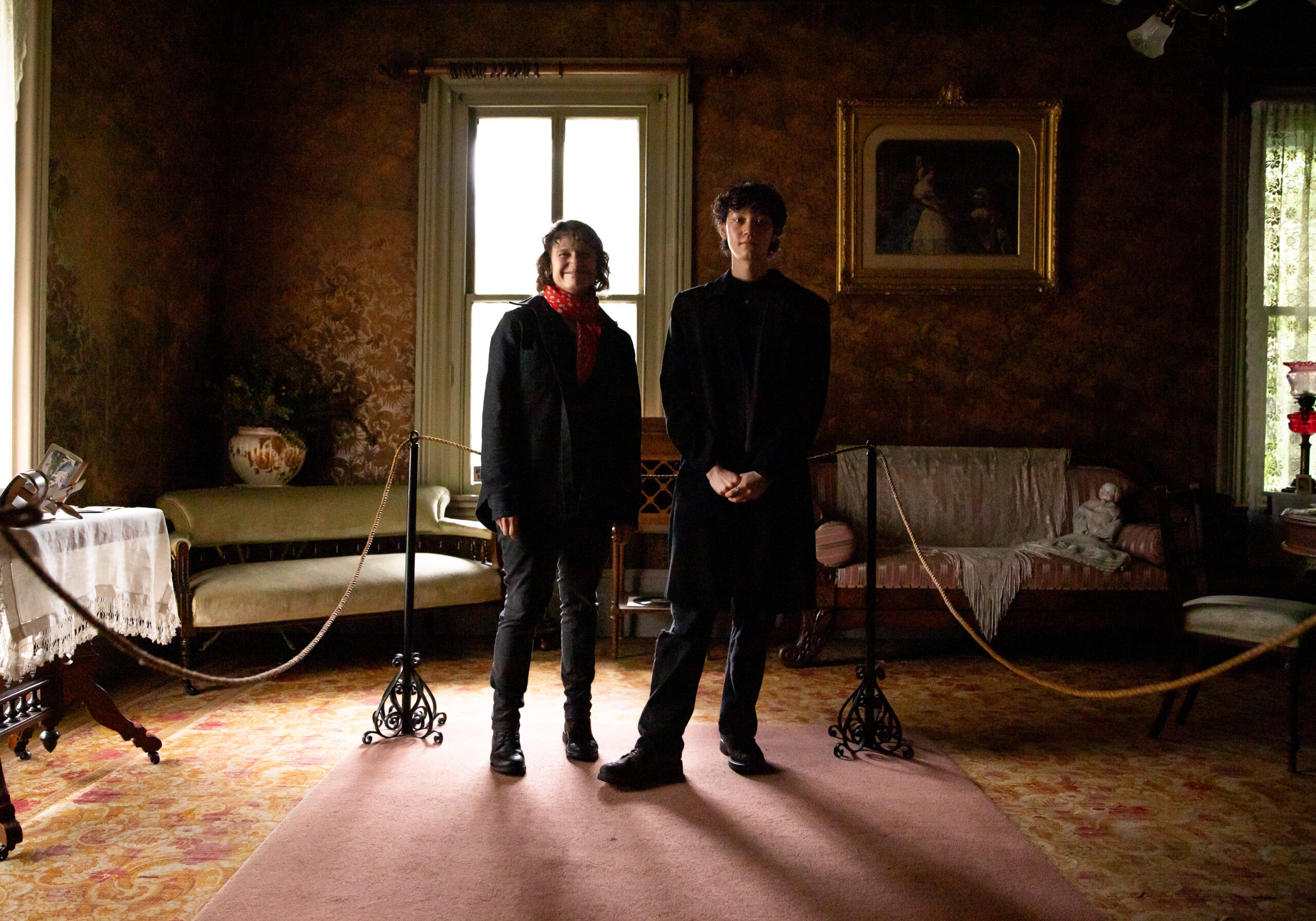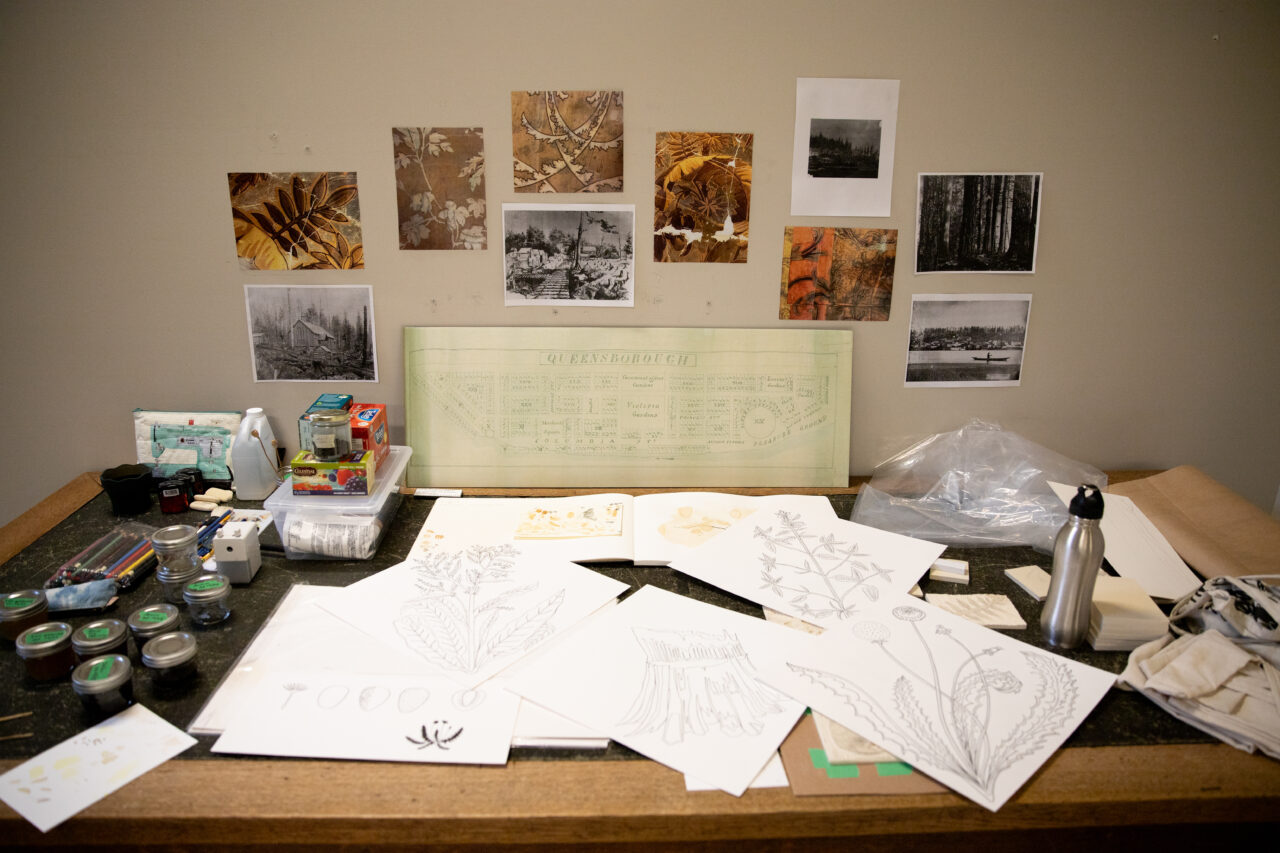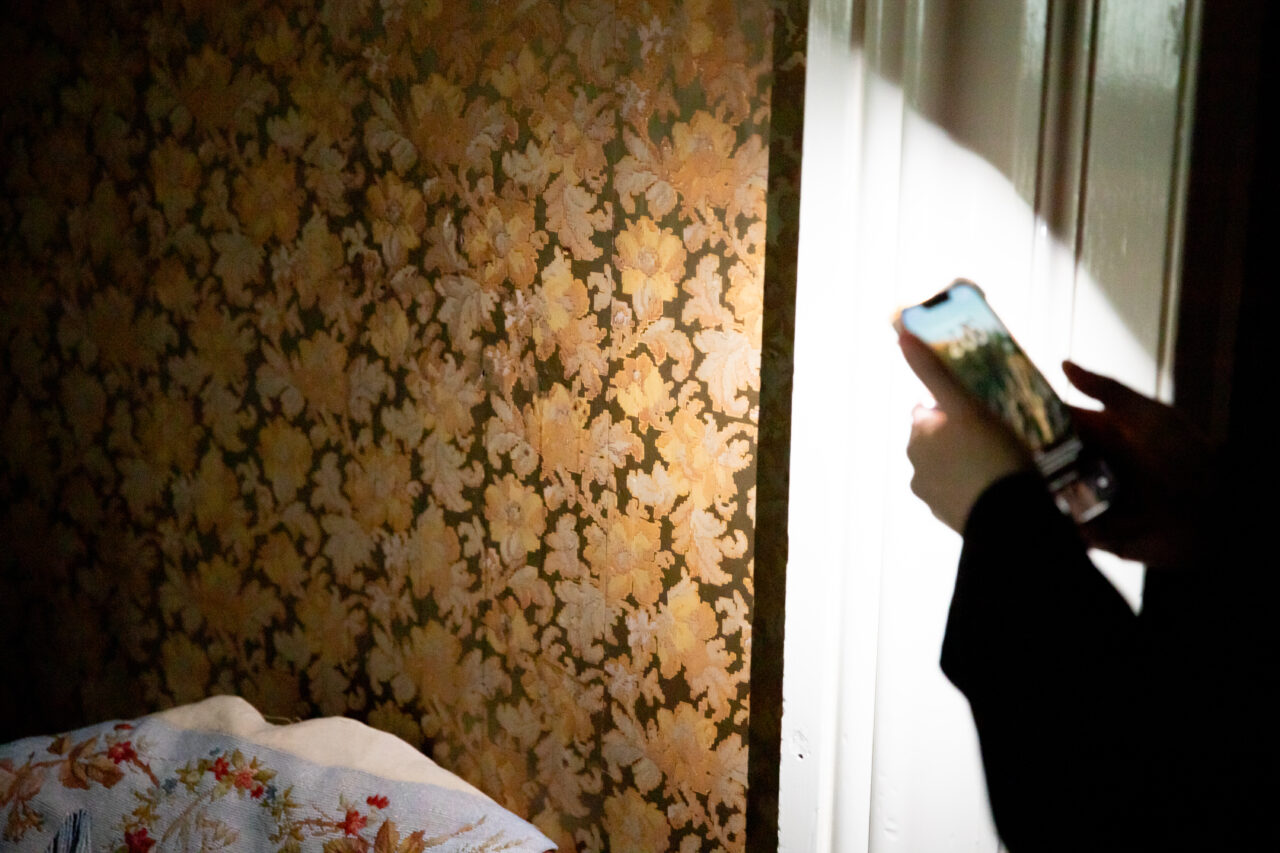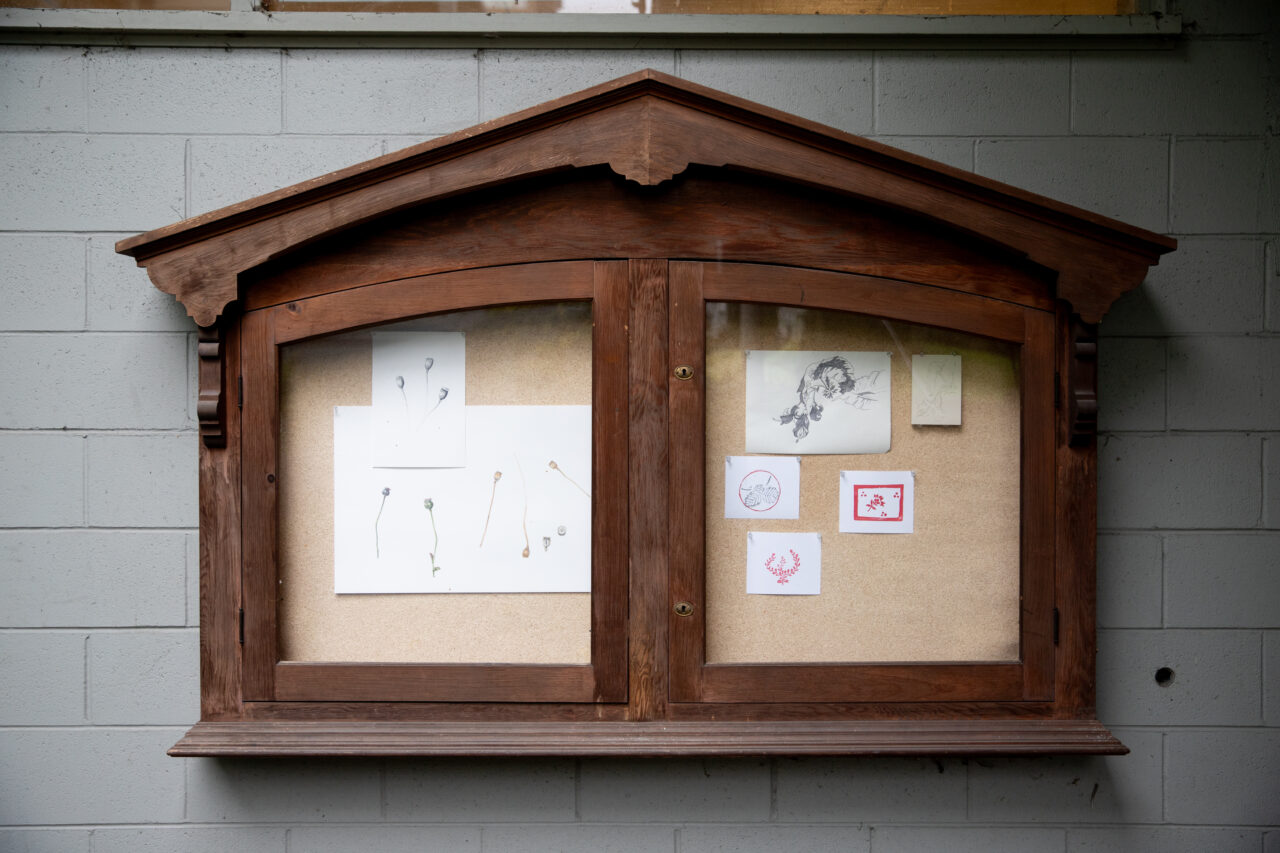Elijah Biscoe and Holly Schmidt Shed New Light on a Historic Home in New Westminster
By Perrin Grauer
The artists were paired through the Shumka Centre for Creative Entrepreneurship for a residency exploring how established history is only part of the story.
A recent apprenticeship with artist and ECU faculty member Holly Schmidt saw artist and ECU alum Elijah Biscoe (BFA 2023) help generate new historical perspectives through a colonial home in New Westminster.

Holly and Elijah spent time listening, sketching and otherwise “attending to the different sensorial aspects” of the Irving House. (Photo by Perrin Grauer)
Over the summer and fall, Elijah assisted Holly during her residency at Irving House on Royal Avenue. Reportedly the oldest intact home in the Lower Mainland, the 19th-century Gothic structure was restored as part of New Westminster’s heritage program.
“Irving House is typical of a lot of historic houses, where it represents settler colonial history and tells stories about the people who came here for purposes of either acquiring land or extracting things from the land,” Holly tells me from the Irving House Annex, an outbuilding that once housed the New Westminster Museum and Archives. “I think the intention of the residency was to invite artists to do research in order to bring up alternate histories that maybe don’t get told as often, and also to challenge some of these dominant narratives of BC history.”
For Elijah, discovering how the Irving House might serve as a portal to the broader dynamics of the region was eye-opening.
“A really emotional thread that runs through the research is understanding the value that was being imbued into this otherwise inert thing,” he says. “The idea of nation-building, the idea of the colonial project, branches out even farther than the Irving House and into current Vancouver history.”

Drawings, photographs, prints, maps, botanical inks and other items sit in a studio space in the Irving House Annex. (Photo by Perrin Grauer)
Holly and Elijah were linked through the Art Apprenticeship Network (AAN), a program run by the Shumka Centre for Creative Entrepreneurship and funded by the RBC Emerging Artists Project. Each year, the AAN pairs paid student apprentices with established artists, curators and cultural workers to work on specific projects.
The residency was conceived by Quyen Hoang, the City of New Westminster Public and Community Art Coordinator, in collaboration with the Museum and Archives. Artist and ECU faculty member Janet Wang has been conducting a parallel residency at the Irving House at the same time.
Upon first gaining access, Holly and Elijah spent time listening, sketching and otherwise “attending to the different sensorial aspects of the site,” Holly says. They dug into microfiche at libraries, spoke with residents and Irving House staff, looked through family fonds and photo albums, and explored records in the New Westminster archives.

Elijah uses a smartphone to illuminate the ornate wallpaper and embroidery in one of the front rooms at Irving House. The patterns refer to species of plants not native to BC, underscoring how colonial ideals were subtly reinforced in the spaces and objects created by early settlers. (Photo by Perrin Grauer)
They also ran workshops for locals to engage with some of the material aspects of Irving House. For instance, the home’s wallpaper and ornate fixtures feature stylized flora. But Elijah and Holly realized none of the vegetation was indigenous to the area. One of their workshops saw participants block-printing plants to explore the broader ideological purposes that animate these often overlooked elements of architecture and decor.
“These are objects for learning, and we can ask so many questions of the material culture around us,” Holly says. “And as an artist, because you’re coming in new, you’re asking different questions, you’re pointing out things that people maybe hadn’t noticed before. It creates opportunity for dialogue. It creates opportunity for questioning.”
Elijah adds that the alive-ness of these histories and ideas represented an enlightening discovery.
“The fact that there’s a living human side to it both within the house and within the city really gives me some perspective about how art can be made,” he says. “The realization that it’s truly a vast network of people talking to one another and listening in turn — I’m just really grateful for that. And I don’t think it would’ve been possible without them.”
Drawings, paintings, prints and other objects created by Holly, Elijah and Janet Wang will be displayed in and around the Irving House and grounds later in the fall.

A vitrine outside the Irving House Annex contains drawings and prints created with botanical and tea-infused inks created during the residency. (Photo by Perrin Grauer)
Elijah notes he will himself will be carrying forward a number of lessons from his time working with Holly.
“It has absolutely been illuminating,” Elijah says. “It’s also comforting to know there’s a place in the world for curious people, and that you can use research to connect rather than imposing a way of thinking on your audience. To promote the kind of curiosity and wonder that I feel like a lot of people maintain, whether they act on it or not.”
Keep your eye on the New West public art webpage for updates on when you can see Holly, Elijah and Janet’s work in response to the Irving House and hear more about what they learned from the residency.
Visit Holly’s website and follow her on Instagram to learn more about her practice.
Visit the demo site for Elijah’s forthcoming Give Up the Ghost interactive fiction project to learn more about his work.
Art Apprenticeship Network is funded by the RBC Foundation in support of RBC Emerging Artists.
You can find this article also on Emily Carr News
